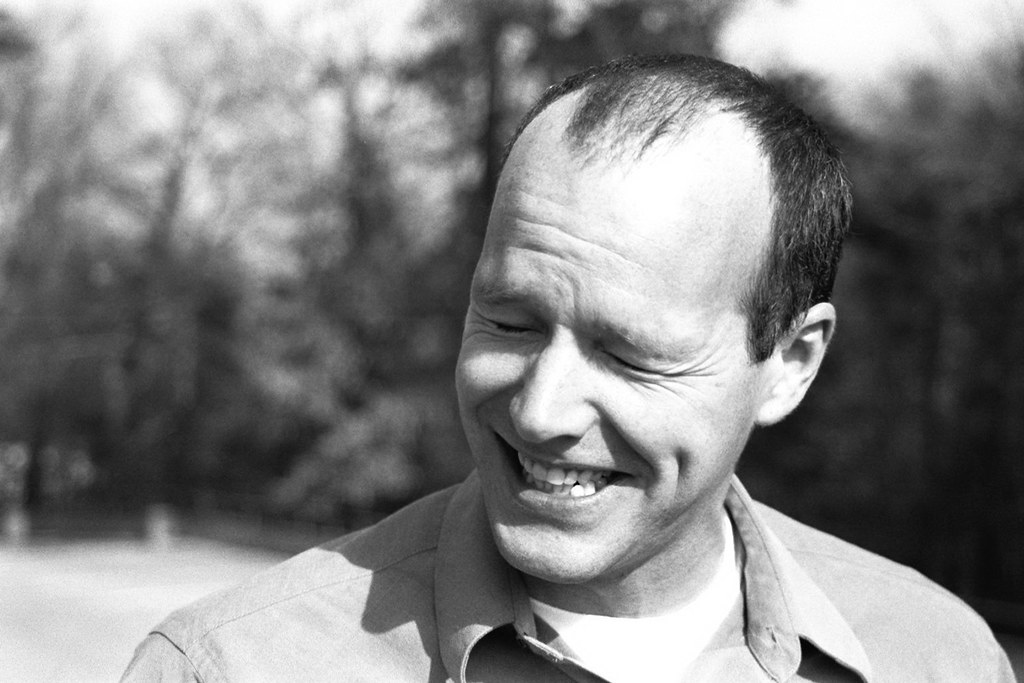Silliman & Saterstrom: A Reflection
The second to last reading of a terrific year of readings has come and gone. What a reading too -- wow.
Selah, who I'd seen read a few months before, read work from her latest project, Slab which arose from her trips to Mississippi after Katrina to visit family. As with her book The Pink Institution, the sections Selah read moved through several different styles: some she introduced as poems (in conversation with her she usually describes herself as a writer of prose), others were first person narrations from various people (including a stripper lost in the aftermath of Katrina who decides not to go dance for the soldiers who could help her because she ~doesn't have time to be raped~), and others were pieces in the grey area of the Venn diagram between poetry and fiction (non-traditional use of grammar/syntax, repetitive, & non-character centered narrative.) She's an excellent reader of her work as well: clear, slow, and dynamic.
Ron, with whom Chris V. and I spent the morning looking at the exhibit described here, read the entirety of Xing. It was really just incredible -- before he started, he invited folks with the book to read along (which some did.) Xing is one of my favorites of his books (I'd read it twice and a half in the last week: ~when I reads / I reads.~) Ron reads with a great deal of dynamism and speed; his left hand sort of flutters as he reads accenting the rise and fall of words. I thought more than once of conductor trying to lead a bebop band. He's a great reader and poet and very personable as well. A real treat to meet him.
I introduced Selah, but Tony Tost introduced Ron; his excellent introduction can be found here.
At the Blue Door, we got a triple treat (or I should say: quadruple): poems by Carl Martin, Patrick Herron, and Lester Oracle and visual work by Noah Saterstrom (Selah's equally talented visual artist partner.) Carl read work from his new collection, Rogue Hemlocks, and smoked the crowd as usual. Patrick freaked us all out with computer generated voice modulations and good renditions of some of my favorites from the Herron arsenal -- one, "Junkie Eagle...", which he lead off with a little jig to the tune of "Pop Goes the Weasel." Then Lester Oracle, who is really much more polite in person than I ever imagined, closed out the poetry for the evening with a reading of his poem that recently appeared in Talisman. Noah's work consisted of maybe a dozen or so pencil sketches of scenes from the aftermath of Katrina (he'd gone down with Selah to visit his family.) He said he'd tried to capture things with the digital camera he'd brought along but that the digital images just missed something about the scenes. The pencil sketches got it, in my opinion -- the pathos, the horror, the simplicity of it all. He also showed three (?) large layered collage pieces that had some light touches of Henry Darger's work.
Todd & Laura laid out a spread, fun was had, Jack (who I haven't seen in ten years and just a few months ago got back in touch with) and Jenni showed up, and then we all went home. Ahh, sweet fun.
So as if this wasn't enough: next month: April 22nd: Emmanuel Hocquard & Rosmarie Waldrop.
Here's my intro for Selah:
1. Announcements
a. Blue Door tonight featuring Carl Martin, Patrick Herron and visual works by Noah Saterstrom.
b. April 22nd, Saturday, Desert City with Rosmarie Waldrop & Emmanuel Hocquard
2. Welcome
a. Thanks for coming
b. Introduce yourself
c. non-profit, volunteer run organization
d. buy books to support the Internationalist
e. sign-up sheet in the back for future information
3. Thank yous
a. Internationalist
b. Ron & Selah
c. all of you
d. the Mary Duke Biddle Foundation
e. the North Carolina Arts Council
f. the Orange County Arts Commission
g. my parents, Violet, & Lori.
4. Tonight, though, we’re here to see Ron Silliman & Selah Saterstrom
5. “Willie called his daughters into the dining room. He picked up a dining room table chair and threw it into a closed window. The window shattered. He said, “That’s a lesson about virginity. Do you understand?” to which they replied, “Yes sir.””
6. Selah Saterstrom’s first book, The Pink Institution, documents a family history that is grotesque in it’s adherence to a sexual code, both physical and gender, that is conveyed in a series of such lessons which are often far more violent than something like a chair through a window.
7. The narrator describes the “Make out game” she was forced to play with her cousin Ruth which involved a piece of paper meant to keep their lips separate, “Ruth would gather her lips around her teeth so that her lips were hard. She would push the paper with her bone mouth into my swollen lips until they were forced to part. The game ended when I ate the paper. She would not stop until I swallowed it. That was the rule.”
8. And this image, of forced and mediated intimacy, is representative of the work as a whole: familial intimacy, affection, love all transformed into weapons and wielded with pitiless abandon against mothers, fathers, sisters, daughters, and granddaughters. This is the twisted South of Faulkner and O’Connor, the world that social etiquette, “manners,” sustains, condones, and keeps unseen.
9. “thirteen bottles of liquor thirteen bottles of liquor a .44 a .44 requested strangulation requested strangulation pyre on fire pyre on fire starvation starvation self willed car accident with small child self willed car accident with small child jumping jumping tumor tumor vomit (possibly accidental) vomit (possibly accidental) severe electrolyte imbalance severe electrolyte imbalance in a swamp, alone in a swamp, alone an insane husband an insane husband an insane husband”
10. In passages such as this scattered throughout the book, the matter of fact tone of the book collapses into a howl, a howl that must be lurking beneath the narrator’s adherence to standard forms of grammar and syntax – beneath her writerly manners so to speak.
11. “It was like the moan was mud and the sounds had stepped out of it. With the moan as backdrop, the sound hovered, vibrating above my mother’s lips for probably few seconds, then the sounds folded. The backs of the sounds collapsed. Like chicken spines breaking. In a high-pitched voice, like it had been stuffed and packed with rubber balloons, she woke speaking, saying, I can talk I can talk.”
12. Selah Saterstrom’s work has recently appeared in Tarpaulin Sky, Harness, Monkey Puzzle, 3rd Bed, and in the Seattle Research Institute’s anthology, Experimental Theology. She lives and teaches writing and text/image courses at Warren Wilson College in Asheville.
13. Towards the end of The Pink Institution, Saterstrom attempts to provide some explanation for all this violence – she writes, “It was bodies, what made bodies, and what bodies made. It was illegal separation. It was back-flipping in a five-star padded room. It was the Confederate Memorial Bandstand. It was the sound of birds pecking glass.”
14. Please welcome Selah Saterstrom.



0 Comments:
Post a Comment
<< Home